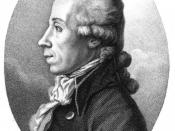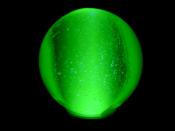Uranium.
Uranium was discovered in the 1700's in the coal mines of bohemia and Jachlovikna.
Uranium's atomic number is 92, its Symbol is U and the atomic mass of uranium is 238.0289. Miners called it Pechblende meaning, Pechblende, from the German words pech, which means either pitch or bad luck, and blende, meaning mineral
Uranium's first full analysis was done on 1789 by Martin Klaproth, a self-taught well educated german chemist.
Klaproth, having extracted from pitchblende what he called 'a strange kind of half metal' (he had only isolated its oxide), he resisted the temptation to give his own name to the new element, which was quite customary at the time.
William Herschel gave uranium its name from the last planet founded in are solar system at the time, he named it Uran, which in its final form became uranium, a name which today is known worldwide while klaproth's own fame has faded.
Uranium is as dense as gold. Uranium, was first prepared with some difficulty, in 1841 by the french chemist Eugène Peligot, using thermal reaction of tetrachloride with potassium. Later in 1870, an important fact was established: uranium is the last and heaviest element present on earth. This was demonstrated by Dimitri Mendeleev in his famous perodical classification of the elements by chemical properties and increasing atomic mass.
Experimentation with uranium lead to many discoversies such as the X-ray by
Wilhelm Röntgen, on November 8, 1895.
Wilhelm Röntgen, was awarded the first Nobel prize in 1901 for the development of the X-ray.
Uranium is weakly radioactive, decaying slowly but inexorably at the rate of one milligram per tonne per year. It is transformed into inactive lead through a chain of radioelements or daughters, each of which has a characteristic disintegration rate, a constant of nature that man...


